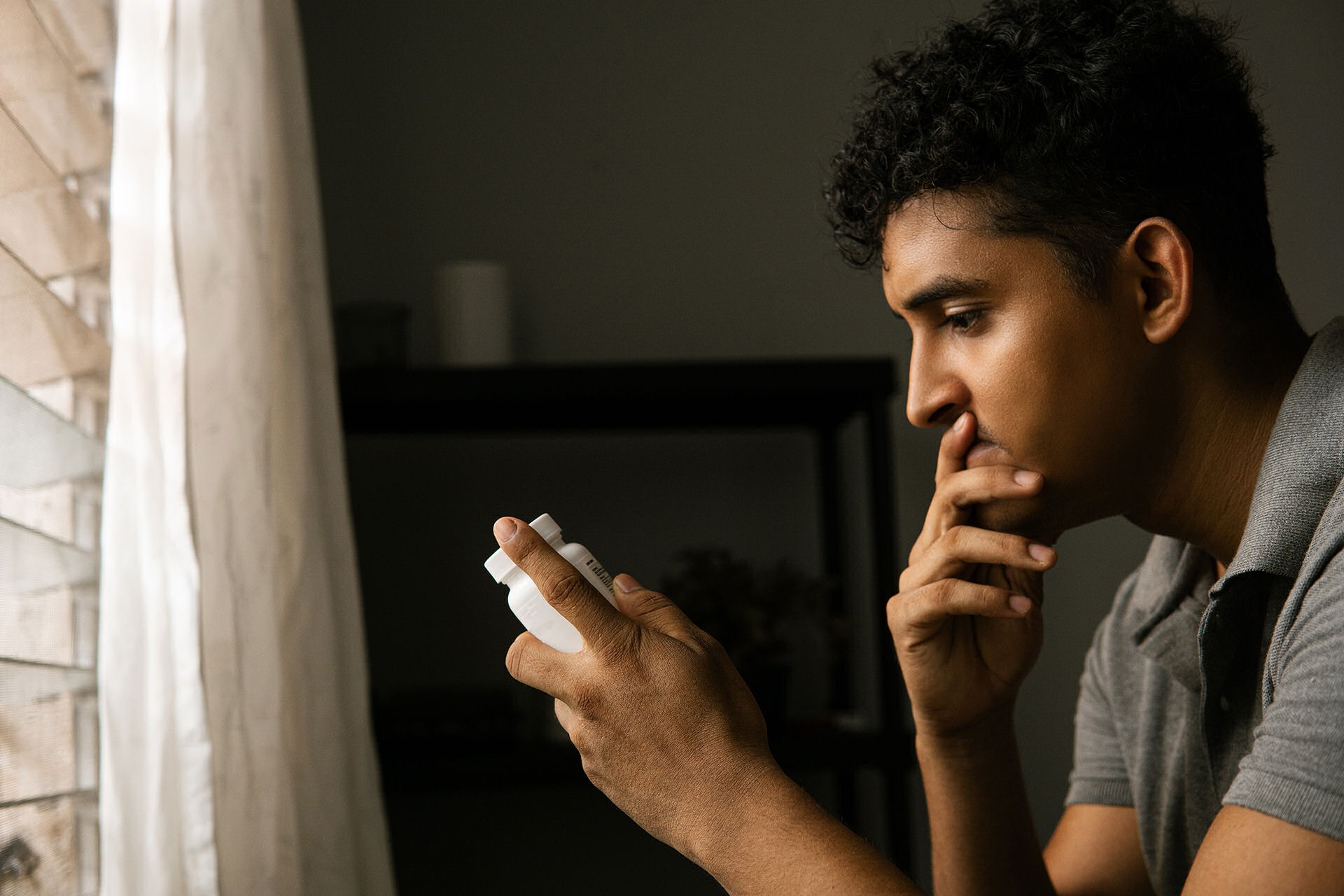Opioid use disorder is a widespread issue, and medications like Belbuca and Suboxone are frequently prescribed as part of treatment plans. Both drugs play a crucial role in managing pain and combating opioid addiction, but their applications, benefits, and risks differ. This article explores the distinctions between Belbuca and Suboxone to provide clarity for those considering these medications.
Belbuca vs. Suboxone: What’s the Difference?
Jump to Section
Belbuca and Suboxone are both prescription medications that contain buprenorphine, a partial opioid agonist. However, their primary uses differ. Belbuca is primarily prescribed for chronic pain management, while Suboxone is designed to treat opioid use disorder (OUD). The key difference lies in the formulations and additional ingredients, such as naloxone in Suboxone, which helps deter misuse.
Belbuca is marketed as a long-term pain management solution, particularly for patients who have not found relief with other treatments. Suboxone, on the other hand, is integral to Medication-Assisted Treatment (MAT), combining behavioral therapies with pharmacological support to address addiction comprehensively.
It’s important to note that while they share an active ingredient, Buprenorphine, Belbuca is not FDA-approved for prescription addiction treatment, while Suboxone is.
What Is Belbuca?
Belbuca is a buccal film that contains buprenorphine, used to manage severe, long-term pain that cannot be controlled with other medications. Unlike traditional opioid painkillers, Belbuca’s partial agonist properties provide effective pain relief while minimizing the risk of respiratory depression and other severe side effects common with full opioid agonists.
Buprenorphine in Belbuca binds to opioid receptors in the brain, providing pain relief without the intense euphoria associated with drugs like morphine or oxycodone. This makes it an appealing option for patients and healthcare providers seeking a balance between efficacy and safety.
What Does Belbuca Look Like?
Belbuca comes as a small, dissolvable film designed to be placed inside the cheek. It’s available in various dosages, with each film marked to indicate its strength. The discreet and easy-to-use design makes it convenient for patients managing chronic pain.
The buccal film is typically yellow and printed with dosage information, allowing for easy identification. Its compact form factor makes it highly portable, ensuring patients can manage their pain wherever they are without drawing attention.
Is Belbuca Addictive?
Although Belbuca has a lower risk of addiction compared to full opioid agonists, it still carries the potential for dependence. Buprenorphine’s partial agonist properties can lead to physical dependence if misused, particularly at higher doses or over extended periods.
This risk underscores the importance of careful medical supervision. Physicians typically assess a patient’s history of substance abuse before prescribing Belbuca and monitor their response to treatment closely to mitigate risks.
What are the Symptoms of Belbuca Abuse?
Belbuca abuse often begins subtly, with patients rationalizing increased doses to manage pain. Over time, physical dependence can lead to behaviors that disrupt personal and professional lives. Symptoms of Belbuca abuse may include:
- Taking higher doses than prescribed
- Craving the medication or feeling unable to function without it
- Engaging in doctor shopping to obtain more prescriptions
- Experiencing mood swings, drowsiness, or confusion
- Isolating from loved ones and neglecting responsibilities
What are the Side Effects of Belbuca Abuse?
Belbuca abuse can result in both short-term and long-term side effects, including:
- Drowsiness or sedation
- Nausea and vomiting
- Headaches or dizziness
- Respiratory depression, which can be life-threatening
- Long-term abuse may lead to liver damage, hormonal imbalances, and increased tolerance, requiring higher doses for the same effect
Prolonged abuse also impacts mental health, contributing to anxiety, depression, and feelings of isolation. Addressing these psychological effects is a crucial component of any recovery plan.
What Is the Symptom Duration and Withdrawal Timeline?
Withdrawal from Belbuca can be challenging and varies based on factors such as the duration of use and dosage. Common symptoms include:
- First 24-72 hours: Initial symptoms like anxiety, restlessness, and muscle aches.
- Days 4-7: Peak symptoms such as nausea, vomiting, diarrhea, and intense cravings.
- Week 2 and beyond: Symptoms gradually subside, but psychological effects like depression or anxiety may persist.
Managing withdrawal requires a combination of medical intervention and supportive care. The physical symptoms typically fade within a week, but emotional and psychological challenges may require ongoing support.
How Do You Manage Symptoms of Belbuca Withdrawal?

Managing Belbuca withdrawal requires a comprehensive approach:
- Medical supervision: Detox should be conducted under the guidance of healthcare professionals to ensure safety and comfort.
- Medication-assisted treatment (MAT): Other medications, such as clonidine or anti-nausea drugs, may help alleviate symptoms.
- Therapy and support: Counseling and support groups provide emotional support and coping strategies.
- Holistic care: Practices like yoga, mindfulness, and nutrition support overall well-being during recovery.
Inpatient rehab facilities often offer the most effective environment for withdrawal management, as they provide round-the-clock care and access to trained professionals.
What Is Suboxone?
Suboxone is a combination medication containing buprenorphine and naloxone. It is primarily used in MAT programs to treat OUD by reducing withdrawal symptoms and cravings. Naloxone is included to deter misuse, as it triggers withdrawal symptoms if Suboxone is injected instead of taken orally.
Suboxone’s dual-action mechanism makes it a cornerstone of addiction treatment. By addressing both the physical and psychological aspects of addiction, it helps patients stabilize and focus on long-term recovery.
What Does Suboxone Look Like?
Suboxone is available in two primary forms: sublingual films and tablets. The films are orange and have a citrus-like taste, designed to dissolve under the tongue. Each film is individually packaged, ensuring easy transport and accurate dosing.
The tablet form is also orange and hexagonal, embossed with specific markings that indicate the dosage. Both forms are distinct in appearance, which helps prevent confusion with other medications and ensures proper use as prescribed by a healthcare provider.
Is Suboxone Addictive?
Suboxone has a lower potential for addiction compared to full opioid agonists like heroin or oxycodone, but it is not entirely without risk. Since it contains buprenorphine, Suboxone can cause physical dependence if misused or taken inappropriately. However, the presence of naloxone in Suboxone discourages abuse by inducing withdrawal symptoms when the medication is injected or misused.
Physical dependence on Suboxone can develop over time, particularly if patients deviate from their prescribed dosing schedule. Symptoms of Suboxone dependency include cravings, withdrawal symptoms between doses, and difficulty stopping the medication without medical assistance. It’s essential for patients to follow their healthcare provider’s instructions and participate in a comprehensive treatment plan that includes counseling and behavioral therapies to minimize the risk of dependence.
What are FAQ’s of Belbuca vs Suboxone?
To further understand the differences between Belbuca and Suboxone, review the answers to these frequently asked questions:
Can both Belbuca and Suboxone be used for pain management?
Belbuca is specifically approved for pain management, while Suboxone’s primary use is treating OUD. However, buprenorphine in Suboxone does have analgesic properties.
Is Belbuca safer than Suboxone?
Both medications carry risks, but their safety depends on their intended use. Belbuca is formulated for chronic pain, while Suboxone is designed for addiction treatment, with naloxone reducing the risk of misuse.
Are withdrawal symptoms similar for both?
Withdrawal symptoms overlap since both contain buprenorphine, but Suboxone may have slightly different effects due to naloxone.
Can Suboxone be addictive?
While Suboxone has a lower abuse potential than full agonist opioids, dependence is possible if not taken as prescribed. Its formulation aims to minimize this risk.
Belbuca vs Suboxone: Treating Opioid Use Disorder

While Suboxone is the primary choice for treating OUD, Belbuca may sometimes play a role in managing pain for individuals in recovery. Both medications can be part of a broader treatment plan that includes therapy, counseling, and support groups. The choice between the two depends on individual needs, medical history, and goals for recovery.
Healthcare providers often evaluate factors such as a patient’s addiction severity, pain levels, and co-occurring disorders to determine the best course of treatment. Combining these medications with behavioral therapies significantly improves the chances of long-term success.
What Treatment Programs Does Free By the Sea Offer for Belbuca and Suboxone Abuse?
Free By the Sea provides comprehensive treatment programs for individuals struggling with prescription medication abuse, including Belbuca and Suboxone. Their services include:
- Medical detox: Ensuring a safe and comfortable withdrawal process.
- Individualized treatment plans: Tailored approaches to address the unique needs of each client.
- Therapy and counseling: Offering individual, group, and family therapy to address the root causes of addiction.
- Medication-assisted treatment: Using MAT to reduce cravings and support recovery.
- Aftercare programs: We provide continued aftercare support to prevent relapse.
These programs are designed to address both the physical and emotional aspects of addiction, empowering individuals to rebuild their lives.
Free By the Sea Offers Prescription Addiction Treatment
At Free By the Sea, individuals struggling with prescription medication abuse receive compassionate, evidence-based care. Our team is dedicated to helping clients reclaim their lives through comprehensive treatment plans that combine medical, therapeutic, and holistic approaches. If you or someone you know is struggling with Belbuca or Suboxone abuse, reach out today for the support needed to start the journey to recovery.

Dr. Richard Crabbe joined our team in 2019 as our psychiatrist and medical director. He attended the University of Ghana Medical School where he became a Medical Doctor in 1977. From 1978 through 1984, he was a medical officer in the Ghana Navy and provided a variety of services from general medicine to surgeries. He received his Certificate in General Psychology from the American Board of Psychology and Neurology in 2002.

 December 30th, 2024
December 30th, 2024










